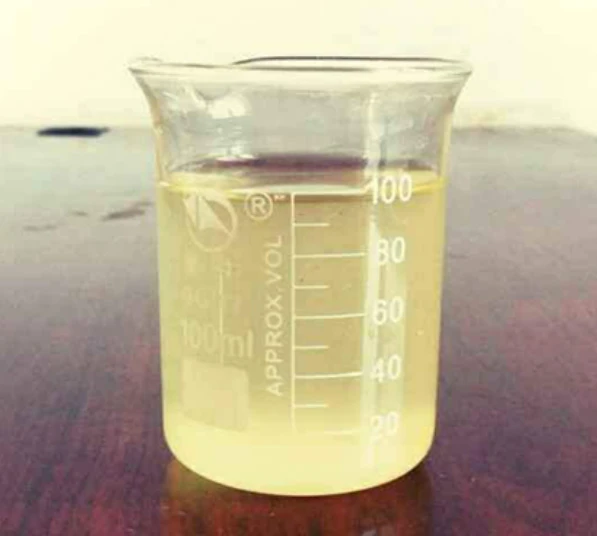Exploring the Applications and Benefits of Diethylene Triamine Penta Compounds in Industry
Diethylene Triamine Penta Acetic Acid (DTPA) An Overview
Diethylene Triamine Pentaacetic Acid (DTPA) is an organic compound that belongs to the family of aminopolycarboxylic acids. This chelating agent plays a crucial role in various fields, including medicine, agriculture, and industrial applications. The unique structure of DTPA allows it to effectively bind with metal ions, making it valuable in multiple applications.
Chemical Structure and Properties
DTPA is characterized by its five acetic acid groups attached to a diethylene triamine skeleton. The chemical formula for DTPA is C10H19N3O10, and its molar mass is approximately 345.4 g/mol. The compound is typically found in a crystalline form and is highly soluble in water. This solubility facilitates its use in various aqueous applications.
Industrial Applications
One of the primary industrial applications of DTPA is in water treatment processes. The chelating properties of DTPA allow it to sequester metal ions such as calcium, magnesium, and heavy metals, thus preventing scale formation in pipes and equipment. This quality is especially important in various industries, including power generation, paper manufacturing, and textile processing, where metal ion-related deposits can lead to significant operational issues.
Additionally, DTPA is employed in the formulation of detergents and cleaning agents. Its ability to bind to metal ions enhances the effectiveness of these cleaning products, aiding in the removal of hard water impurities that can otherwise hinder cleaning efficiency.
Agricultural Uses
In agriculture, DTPA plays a vital role as a micronutrient chelator, particularly for iron and other essential trace metals. In iron-deficient soils, DTPA can be used to improve the availability of iron to plants. When DTPA complexes with iron ions, it prevents them from forming insoluble compounds in the soil, thereby increasing the uptake of iron by plants. This application is particularly beneficial for crops that are sensitive to iron deficiency, leading to better yields and improved plant health.
diethylene triamine penta

Moreover, DTPA is often used in combination with fertilizers to ensure that essential nutrients are readily available for crops, promoting sustainable agricultural practices.
Medical Applications
In the medical field, DTPA is employed in various diagnostic and therapeutic applications. One of the most significant uses is as a contrast agent in nuclear medicine. DTPA is used in radiopharmaceuticals for imaging organs, notably in renal scans where DTPA can help assess kidney function by facilitating the visualization of kidney pathways through imaging techniques.
Furthermore, DTPA has been studied for its potential therapeutic effects in treating heavy metal poisoning, particularly lead and plutonium exposure. The chelating ability of DTPA allows it to effectively bind to toxic metals, facilitating their excretion from the body through urine. This application highlights DTPA’s importance in toxicology and environmental health.
Environmental Considerations
While DTPA possesses numerous benefits, its environmental impact is a subject of discussion. As a synthetic chelator, there is concern regarding the long-term persistence of DTPA and its derivatives in natural ecosystems. Studies have shown that DTPA can potentially enhance the mobility of heavy metals in contaminated sites, which might lead to unintended ecological consequences. As such, regulatory agencies continue to study the effects of DTPA and its usage in various applications.
Conclusion
Diethylene Triamine Pentaacetic Acid (DTPA) is a versatile compound with important roles across multiple sectors, from industrial processes to agricultural practices and medical applications. Its chelating properties enable it to bind metal ions effectively, enhancing functionality in various applications. However, the ongoing assessment of its environmental impact underscores the need for responsible usage and further research into its long-term effects. As we advance technologically and chemically, DTPA remains a critical compound deserving of continued attention and study to maximize its benefits while minimizing potential drawbacks.
-
Pbtc Scale InhibitorPBTC: A Scale Protector for Industrial Water TreatmentNewsAug.05,2025
-
Organic Phosphonate: An Efficient Defender in the Field of Scale InhibitionNewsAug.05,2025
-
Hydrolyzed Polymaleic Anhydride: Green Pioneer in Scale Inhibition FieldNewsAug.05,2025
-
PAPEMP Polyamino Polyether Methylene Phosphonic Acid For SaleNewsAug.05,2025
-
Flocculant Water Treatment: A Pioneer in Purification in the Field of Water TreatmentNewsAug.05,2025
-
Benzyl Isothiazolinone: An Efficient and Broad-Spectrum Antibacterial Protective GuardNewsAug.05,2025





